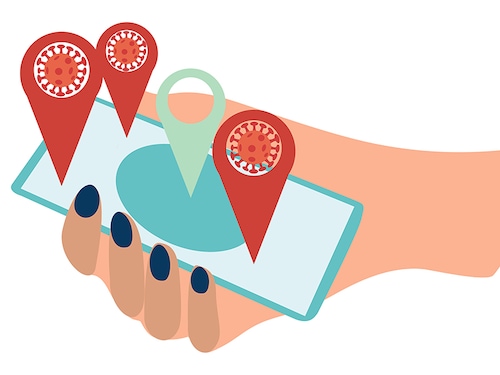How tech can help non-profits cope with Covid-19
The marginalised are the most vulnerable both financially as well as in the spread of the Covid-19 disease. The role of the social sector is more important than ever, and technology could help address


Life as we know it has been upended by Covid-19, and the social sector is no different. Most non-profits employees, back-end, program and field teams, are now working from home. Some programmatic efforts are being undertaken remotely , others have been reprioritised, and a few essential field operations continue, particularly in the health sector. Non-profit organisations are in the midst of resource management and will soon have to deal with challenges such as redesigning programmes to meet Covid-19 specific social and economic issues, execution and monitoring outcomes remotely. Of course, as the corporate sector and CSR budgets get impacted, they will deal with larger issues such as restricted funding. It is likely that the funds available may have a Covid-19 bias in terms of spends. Under these circumstances, which are likely to continue for the next few quarters, non-profit organisations will have to ideate and execute means that can maxmise impact with few resources. Using technology efficiently and effectively will have long-term benefits in terms of both impact as well as scale.
How can non-profits respond to Covid-19 using technology?
The operations of a non-profit organisations can be broadly divided into its core ‘front end activities’ and support functions or ‘back end activities’. In an ideal world, all activities should be automated. However, the reality is that for most organisations it is tough to manage that. While large-scale organisations may need to look at both front end and back end, for most, the key question is that given limited resources, where should they implement technology so that it has the maximum impact. Ask the following questions:» What can organisations do to increase the impact or effectiveness of the program?» Is the program being monitored effectively?» What is the key challenge to scaling or achieving the organisational vision?» How can technology help to achieve this in a non-linear manner?Technology can be an effective tool to solve key business challenges at the front end of their operations. For example, in a non-profit engaged in maternal and child health, the key intervention is home visits by health workers. In the current situation, most of this would be done on the phone, with some follow up on high-risk cases by community workers. The key challenges here are:» Consistency of care by different workers during each call/ visit and coverage of all the points as required» Scheduling and planning of calls or visits to make sure that follow up is done as per the established protocols» Monitoring of calls and escalation of high-risk cases» Providing timely and accurate information for mother and child careNon-profit organisations with technological success
One of the leading NGOs focused on women and childcare, SNEHA, is now using a mobile phone app that enables health workers to schedule calls and visits. FMCH has a decision tree for each call to take the worker through the protocol, enter data from the visit and highlight high-risk cases that significantly improves the quality of care for the mother and child. Moreover, the mobile platform enables the entire program to become modular and replicable, thereby enabling scale through partners in different states once the situation is back to normal. Non-profit ARMMAN, which works to improve the health and well-being of under-served mothers and children in India, deploys a 360-degree approach; mobile technology helps send weekly timed and targeted healthcare information to pregnant women and mothers with children until age one; a mobile platform provides refresher training to front-line health workers (ASHAs). Its programmes have reached more than 18 million pregnant women, mothers and children and enabled refresher training of more than 160,000 ASHA workers.
So, how can corporates collaborate with non-profits?
Funding is required both in terms of the actual technology as well as the personnel costs for the team to manage the initiatives. It is an investment well worth the return—not only to enhance productivity and impact but also to create replicable models for non-linear scaling. By implementing systems, the organisation becomes more ready to adopt technology at all levels and with the help of dashboards, moves towards more data-driven decision making. With the proliferation and lowering costs of mobile technology, the phone is being used as a game changer across classrooms or communities. As business leaders, we add great value to solving problems by investing both time and money in this area. The current situation is unprecedented, everyone is struggling to cope. The marginalised are going to be impacted the most, both in terms of the finance and in the spread of the disease. The role of the social sector cannot be understated. Support is required on several fronts, and for many, technology could be that game changer in stepping up their response. The writer is a co-founder of Koita Foundation that supports non-profits to leverage technology in order to build scale and enhance impact in an orderly manner
First Published: Sep 11, 2020, 10:45
Subscribe Now